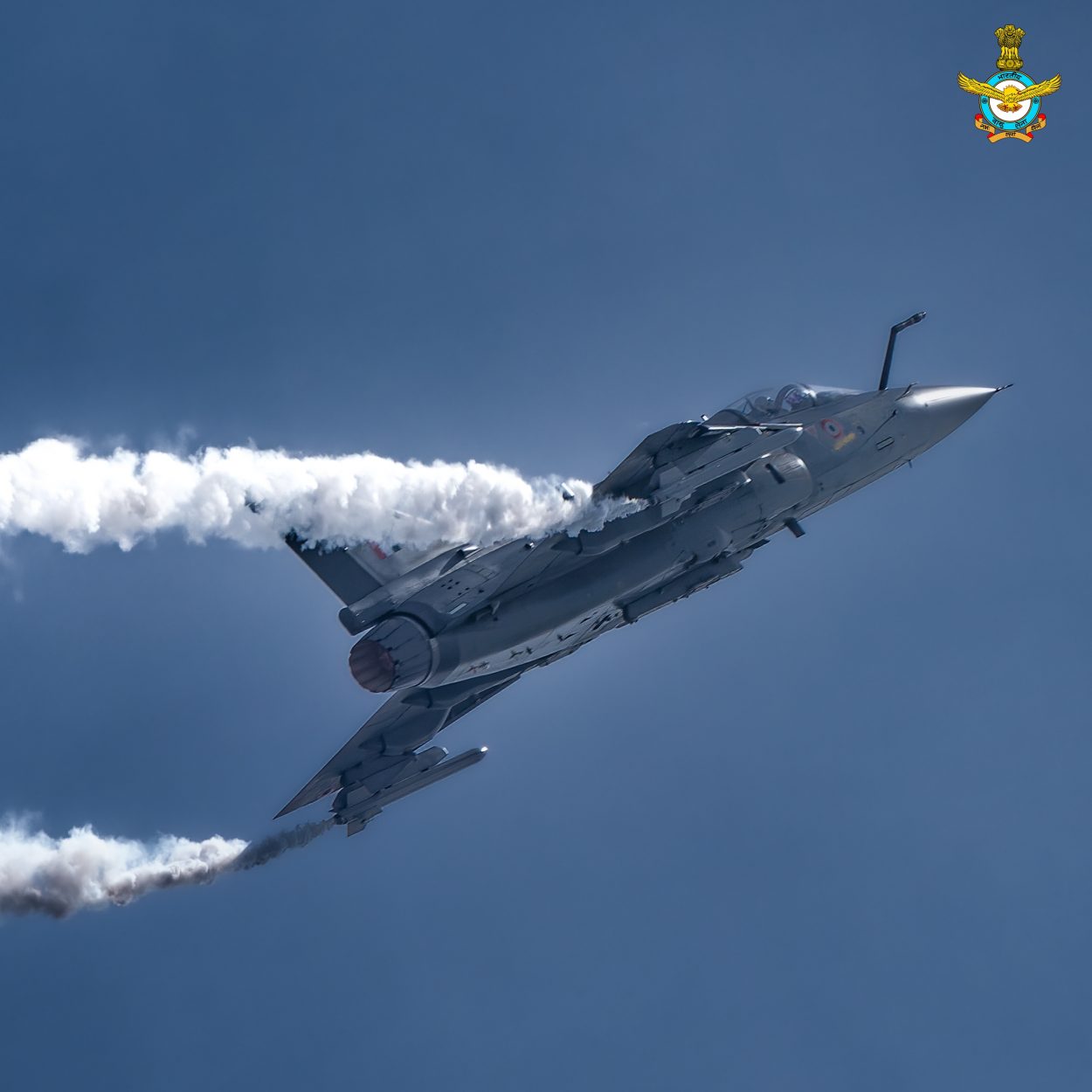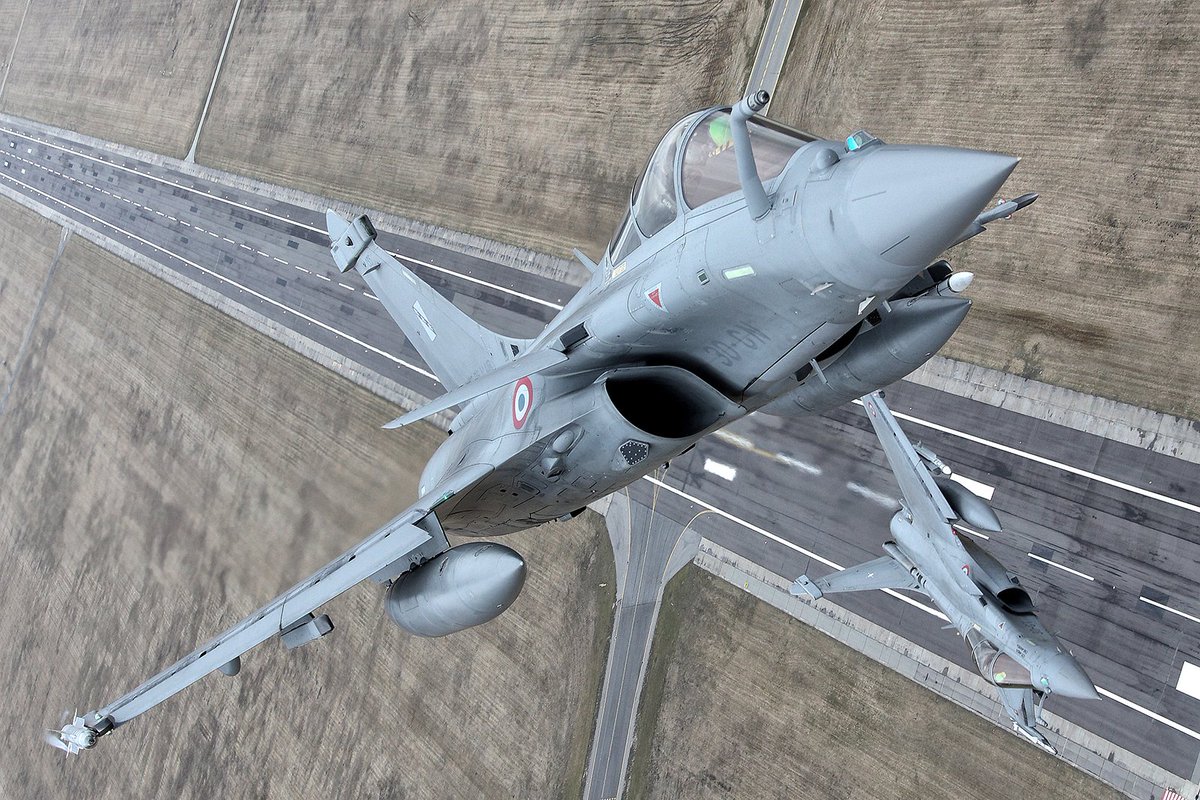China Uses Rafale Fighters To Boost Sale Of ‘Faulty’ JF-17 Thunders; Comparison With French Jets Flawed
Ever since the Indian Air Force (IAF) started acquiring the Rafale fighter jets, Chinese and Pakistani propaganda machinery have been running a narrative projecting the latest variant of the China-Pak JF-17 fighter as an equivalent to the Dassault fighters.
The China-designed and substantially-produced JF-17 ‘Thunder’ is the crown jewel of China-Pak aviation relations and the first major defense product for sale. Such comparison can thus also be seen as a sales pitch. There is thus a need to look at the technical specifications to allay such thoughts.
China — Pakistan’s Main Aircraft Supplier
China supplied the Pakistan Air Force (PAF) with an F-6 aircraft (air defense version of MiG-19) in 1965 and a Harbin H-5, a Chinese version of Russian Illyshin IL-28, in the 1970s.
China also helped establish the Pakistan Aeronautical Complex (PAC) at Kamra in 1973. In the mid-1980s PAF received A-5Cs (Chinese MiG-19 ground attack variants) and Chengdu F-7s (Chinese MiG-21).
The JF-17 is the latest of the lot. PAF also flies Chinese ZDK-03 AWACS, the Chinese-designed and PAC-built K-8 Karakorum intermediate jet trainers, and the CH-4 Recce-cum-strike drones that carry up to 4 PGMs. PAF has also bought many Chinese air-to-air missiles like the PL-5 (Magic-1, 15 km range) and PL-12 (R-77 equivalent with 80 km range).
JF-17 – Lacks The Thunder?
The JF-17 ‘Thunder,’ the Chinese original FC-1 Xiaolong, is a lightweight single-engine, multi-role combat aircraft designed by China and produced jointly by PAC and China’s Chengdu Aircraft Corporation (CAC). FC-1 first flew in 2001, and JF-17 rolled out in 2007. It was inducted into PAF in 2010.
The aircraft’s roles are aerial reconnaissance, ground attack, and air interception. This fly-by-wire, 1.8 Mach fighter is powered by the Russian Klimov RD-93 turbofan engine. The aircraft could later be powered by the Chinese indigenous Guizhou WS-13 engine. The initial aircraft had a head-up display, a data link, and KLJ-7 Doppler radar.
The later aircraft got aerial refueling and an electronic warfare suite. It can carry a 6,700 lb (3100 Kg) external load on seven hard points. Weapons are mostly Chinese and include the Gsh 23 mm gun, PL-5, and PL-12 AAMs, LS-6 ‘Thunderstone’ GPS-guided glide bombs, and YJ-12 supersonic and YJ-83 subsonic anti-shipping missiles. PAF maintains one squadron in the maritime strike role.
JF-17 Block III
The latest Block III has the Chinese KLJ-7A active electronically scanned array (AESA) radar, digital fly-by-wire flight control system, a new helmet-mounted display, network-centric warfare capability, a holographic head-up display, an infra-red search and track (IRST) system, new electronic warfare systems, weapons upgrade and a radar crosssection reducing ‘pseudo-stealthy’ airframe.
The aircraft will be armed with two newer dual-head PL-5EII short-range air-to-air missiles (AAMs). Later, PAF claims, they may get a longer range and more sophisticated PL-15 AAM (150 km). The Chinese call the Block III a 4th generation-plus fighter. The AESA and PL-15 combination, PAF claims, would outrange all IAF aircraft other than Rafale and upgraded SU-30 MKI. The Block III variant has just begun inducting.
JF-17 Operational Status
PAF’s nearly 130 aircraft fleet has accumulated around 25,000 operational flying hours. The aircraft also participated in PAF’s ‘Operation Swift Retort’ on February 27, 2019, after the Balakot strike. PAF has also used them to bomb militant positions in North Waziristan, delivering both unguided and precision-guided munitions (PGM).
Aircraft costs have been kept low by borrowing technologies developed for Chinese J-10 fighters. The JF-17 is gradually becoming the backbone of the PAF. In 2015 PAC produced 16 JF-17s. Currently, Pakistan is believed to have the capacity to produce 25 JF-17 per year. Work-share-wise, 58% of the airframe is Pakistani and 42% Chinese.
As of 2019, PAF has five JF-17 squadrons, plus a testing and training unit. Nearly 70 jets are of Block 1 Type, and the remaining are Block Type II. The initial lot is already being overhauled and the PAF plans to operationally deploy the Block-III type in 2021. PAF has ordered 50 Block III to be delivered by 2024. Older JF-17s may also be upgraded to the Block III variant later.
The Block III type aircraft reportedly cost around $32 million each. The 26 two-seat JF-17B ordered will be used for training, and they are a more effective electronic warfare platform with a second seat having a weapons systems officer (WSO) for operational roles.
JF 17 Exports
Three JF-17s were sold to the Nigerian Air Force in 2018. At least six out of an order of 18 JF-17Ms have been delivered to Myanmar. China and Pakistan are trying to induce Algeria, Argentina, Bangladesh, Egypt, Iran, Myanmar, Malaysia, Morocco, Nigeria, Sudan, Sri Lanka, and Zimbabwe with a reasonable price for export.
Tejas LCA vs JF-17: Comparison
More than Rafale, comparisons are being drawn between the JF-17 and India’s LCA ‘Tejas.’ The Tejas uses many new technologies including large amounts of composite materials, advanced avionics, and a unique aerodynamic configuration, and has a good potential to be expanded into variants. Some call JF-17 the aircraft of today and the Tejas the aircraft of tomorrow.
The LCA has been manufactured by a single country and is claimed to be the world’s lightest supersonic fighter. But the second LCA squadron has just been formed, and IAF has only around 24 aircraft. Aircraft production is still at 8-12 a year and is planned to be ramped up to 16 a year.
The more comparable LCA Mk 1A may be inducted only around 2023. Nearly 130 JF-17 are already flying, and the aircraft production at nearly 25 aircraft a year is high. While Block III is inducting, LCA Mk II is still 8-10 years away.

The JF-17 has been in service for the last 10 years and already has two foreign customers flying the JF-17. LCA is clearly better in performance. JF-17’s Russian engine has maintenance and serviceability issues compared to LCA’s General Electric F404 engine, which is much more reliable. LCA is, of course, a little costlier, at around US$ 35 million.
Dassault Rafale – A Fighter Of Another League
The Rafale is an Omni-role fighter and a battle-proven weapon platform that has been selected from among the world’s best after a grueling selection process.
This French twin-engine, canard delta-wing multirole fighter aircraft built by Dassault Aviation is equipped with the latest avionics and a wide range of weapons. Rafale is intended to perform air supremacy, interdiction, aerial reconnaissance, ground support, deep strikes, anti-shipping operations, and nuclear deterrence missions.
Although not a full-aspect stealth, it is designed with reduced radar crosssection through wing-body shaping and extensive use of composite materials. The glass cockpit is designed around the principle of data fusion. The primary flight controls are arranged in a hands-on-throttle-and-stick (HOTAS) arrangement.
The direct voice input (DVI) system reduces pilot workload across all operations. The Helmet Mounted Display (HMD) is integrated with weapons. The cockpit is fully compatible with night vision goggles.
Rafale has an on-board oxygen generation system that eliminates the need to carry bulky oxygen canisters. The integrated electronic defense suite SPECTRA protects the aircraft against airborne and ground threats and allows independent missions for suppression of enemy air defenses (SEAD).
Rafale’s ground attack capability is heavily reliant upon targeting pods, such as Thales Optronic’s Reco New Generation/Areos reconnaissance pod and Damocles electro-optical/laser designation pod.
The Thales RBE2 AA AESA multi-mode radar allows increased levels of situational awareness, multiple air target tracking, long-range interception, as well as real-time generation of three-dimensional terrain maps.
In the air supremacy role, it has passive electro-optical sensors that allow silent attacks. The Rafale has 14 external hard points and can carry a maximum of nine tons. The aircraft is nuclear-capable.
The two time-tested Snecma M88 engines are modular in design, allowing quicker turnaround servicing and maintenance. The engines enable super-cruise while carrying four missiles and one drop tank. There is a carrier-based variant, the Rafale M, which the Indian Navy is set to acquire.
In addition to the French Air Force, the Rafale is being operated by India, Egypt, and Qatar and has been ordered by a few others. Rafale has been operationally tested in combat in Afghanistan, Libya, Mali, Iraq, and Syria.
Several upgrades to the weapons and avionics of the Rafale are under testing and planned to be introduced in steps this year onwards. The Rafale is planned to be the French Air Force’s primary combat aircraft until 2040 or later.
The Rafale is India’s most capable fighter aircraft with major capability enhancements vis-a-vis the current best platform, the Su 30 MKI.

Rafale’s India-specific Enhancements
The IAF-specific enhancements included a helmet-mounted sight and targeting system; the ability to start aircraft engine and take-off from high-altitude airfields like Leh (over 10,000 ft altitude); an upgraded variant of the radar warning receiver to identify hostile tracking systems; low band jammers: a towed decoy system to deceive and thwart incoming missiles; the inclusion of Meteor missile; 10-hour flight data recording; French industrial support for maintenance of the fleet for 50 years; ground and technical support for two fighter airbases instead of one; and penalty-linked assured fleet serviceability/availability of 75 percent.
Its weapon package will give a quantum jump in operational capability. The SCALP is a high-precision long-range, low-observable, air-launched ground attack cruise missile with special anti-runway features with high accuracy. It has a range of 300 km, which will be extended to 540 km. Meteor is an active radar-guided beyond-visual-range air-to-air missile (BVRAAM) with over a 150-km range. It offers multi-shot capability in a heavy electronic countermeasures (ECM) environment with no escape zone of over 60 km.
IAF will also get HAMMER (Highly Agile Modular Munition Extended Range) air-to-ground missiles. The 50 percent offset clause will bring a significant ‘Make in India’ boost and also technology transfer.
The Rafale is clearly a game-changer in the region, and any comparison with a generation older JF-17 is flawed. Rafale is adding a significant punch to the IAF’s Op capability and will help India dominate the Indian AOR (Area of Responsibility) in the South Asian and Indian Ocean regions.
The only benefit China & Pakistan would get by comparing JF-17 with Rafale is to get some marketing points and try boosting its sales. But with a below-par service record and unhappy customers in Myanmar & Nigeria, that too looks extremely difficult.
- Air Marshal Anil Chopra (Retired) is an Indian Air Force veteran fighter test pilot and is currently the Director-General of the Center for Air Power Studies in New Delhi. He has been decorated with gallantry and distinguished service medals while serving in the IAF for 40 years.
- He tweets @Chopsyturvey
- Follow EurAsian Times on Google News

